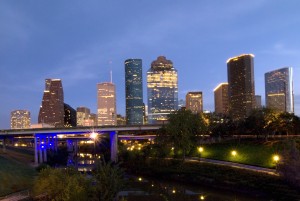 Will a combined heat and power (CHP) unit work in your building? It’s worth the consideration.
Will a combined heat and power (CHP) unit work in your building? It’s worth the consideration.
Typically, a high-rise building gets its electricity from a large utility power plant, supplemented by boilers to provide heat and chillers for cooling. CHP is a cogeneration system, where two forms of energy — electricity and heat — are generated from one source. An environmentally savvy choice, these systems can save money through efficiency, minimize energy waste and reduce greenhouse gas emissions.
Saving Money and Reducing Emissions
Integrating a CHP unit into a high-rise building offers significant potential benefits. By reducing the amount of wasted energy (heat), these systems can achieve up to 80 percent efficiency, compared to 33 percent efficiency for a typical utility power plant.
So what does this mean for end-users?
- Lower operating costs for the building owner, who gets more bang for the energy buck.
- Increased energy reliability for tenants, as CHP units can be designed to operate during utility power outages.
- A reduced carbon footprint, which enhances a building’s sustainability and contributes to LEED (Leadership in Energy and Environmental Design) certification.
The Keys to CHP Integration
The first step to understanding whether CHP is the right choice for you is to explore your building’s thermal and electrical loads. CHP systems are most effective when these loads are balanced, allowing a unit to work fully loaded at peak efficiency. Building operators must look strategically at overall system efficiency, especially as office buildings often have a low electric load during off-peak hours. And if a building’s loads are too low, a small CHP unit may not provide the return on investment necessary to justify investing in this advanced equipment.
Integrating CHP into high-rise office buildings also presents a specific set of challenges.
- Developers hope to lease every square foot of a building, so space is at a premium. CHP takes more of this valuable floor space than typical heating and cooling only systems, so early integration is key.
- A unit must operate quietly, and its intake and exhaust air must not impact the building’s often glassy exterior. Designing adequate cooling air, combustion air, exhaust, vibration and sound attenuation can minimize the impact.
- Interconnection and protection requirements can be restrictive and expensive, and it can be a challenge to coordinate with utilities that see CHP systems as a loss to market share.
Increasing Your Probability of Success
In many cases the benefits far outweigh the challenges, and a quick screening can provide direction. If CHP units seem like the right choice for you, here are a few tips to help your chances of success.
- Begin planning for a CHP system as early in the project as possible. The more a system is integrated into a high-rise, the more efficient it will be.
- If a CHP system isn’t part of your immediate plan, consider reserving space and planning for later integration.
- Contact your local utility early to work through interconnection issues. Engage a partner who understands the utility mindset and forge a relationship based on open communication.
- Talk through the budget and scheduling impacts of interconnection issues, which can affect the project’s overall success.
If you’re headed to Boston for IDEA 2015, I’ll be presenting “Challenges of Integrating CHP into High-Rise Towers” with Dwain Botelho from NRG at 11:30 a.m. on June 30. We’ll share more information about CHP challenges and solutions gained from recent real-world experience on a West Coast office tower.
Have you had any experience with integrating CHP units? I’d love to hear about it in the comments.
Mike Dempsey heads up the electrical department in Burns & McDonnell’s OnSite Energy & Power Group, which designs campus energy systems and develops comprehensive energy master plans. He leads the design of on-site generation facilities, both CHP and emergency/standby systems, overhead and underground medium-voltage distribution, substations, and central utility plants for higher education, healthcare, aviation and industrial campus clients.
